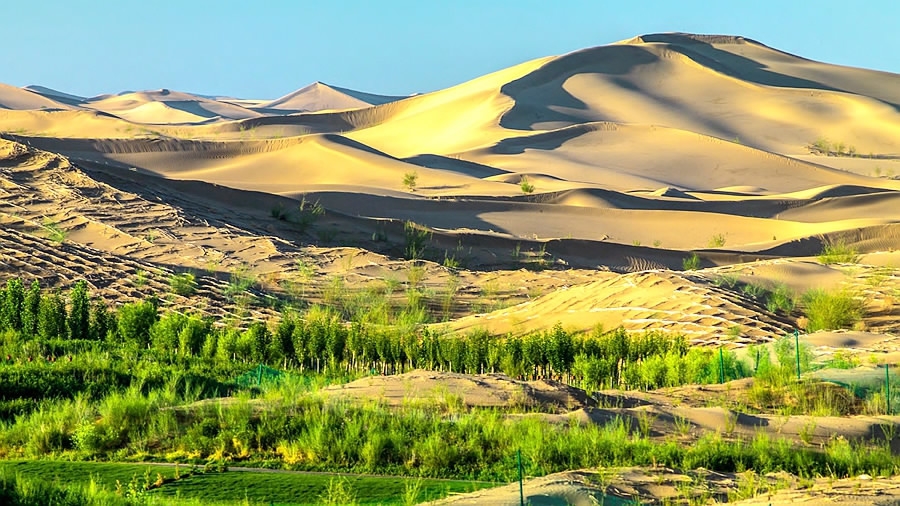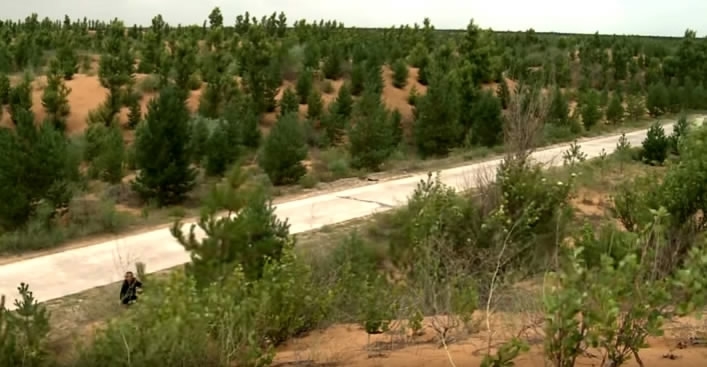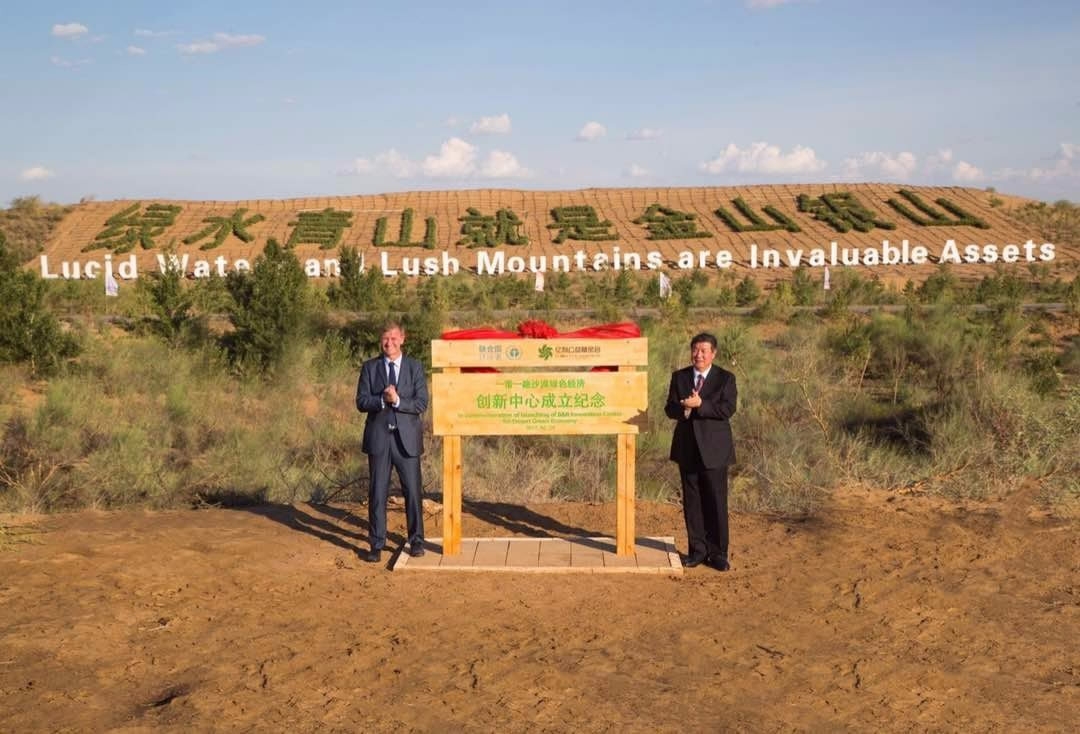
China
20:33, 29-Jul-2017
China's Kubuqi model offers solution to desertification

China's success in reforesting the once barren Kubuqi Desert has seen the region gradually prosper in the development of a green economy, while the country seeks to share and promote the model worldwide.
The 7th Kubuqi International Desert Forum kicked off Saturday in the Kubuqi Desert in northern China's Inner Mongolia Autonomous Region, attracting delegates and experts from home and abroad to discuss desertification.
Kubuqi is the seventh largest desert in China, covering an area of 18,600 square kilometers. It was once the source of frequent sandstorms in Beijing.
Over the past three decades, farmers and herdsmen in Kubuqi planted Chinese medicinal herbs, such as licorice, to improve soil, built photo-voltaic power stations for electricity and fostered tourism.

These efforts not only contributed to the greening of more than 6,000 square kilometers of Kubuqi, but also lifted 102,000 people out of poverty.
The core of success in Kubuqi is its sustainable business model, and the establishment of a system that incorporates policy instruments, private sector investment and active participation of locals, according to a policy report from the United Nations Environment Programme.
The greening project in Kubuqi has offered a model for the world to tackle desertification, said representatives of the United Nations Convention to Combat Desertification.
China has made great progress in the fight against desertification in the past few years, with shrinking degraded land and reduced poverty in many areas.

Wang Wenbiao (R), Chairman of the China Elion Foundation and Erik Solheim (L), Executive Director of the UNEP on the Belt and Road Innovation Center for Desert Green Economy at an opening ceremony in China's Kubuqi Desert, June 25, 2017. /Xinhua Photo
Wang Wenbiao (R), Chairman of the China Elion Foundation and Erik Solheim (L), Executive Director of the UNEP on the Belt and Road Innovation Center for Desert Green Economy at an opening ceremony in China's Kubuqi Desert, June 25, 2017. /Xinhua Photo
The area of desertified land in the country shrank by an annual average of 1,980 square km in 2010-2014, a sharper decline than the 1,717 square km in 2005-2009, and 1,283 square km in 2000-2004
For the 2016-2020 period, China aims to rehabilitate 10 million hectares of desertified land and turn more than half of the country's reclaimable desert into green land.
In early September, China will host a United Nations meeting on fighting desertification in Inner Mongolia, which is expected to draw up a road-map to end desert expansion by 2030.
(Source: Xinhua)
686km

SITEMAP
Copyright © 2018 CGTN. Beijing ICP prepared NO.16065310-3
Copyright © 2018 CGTN. Beijing ICP prepared NO.16065310-3